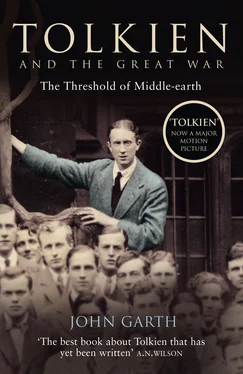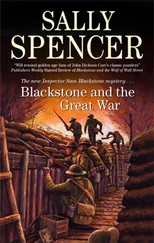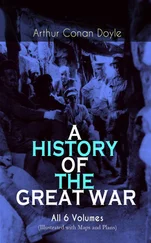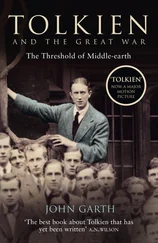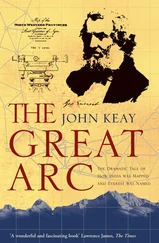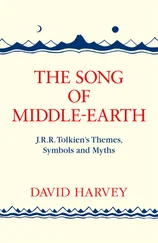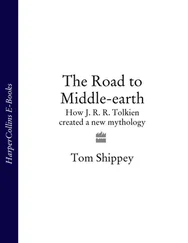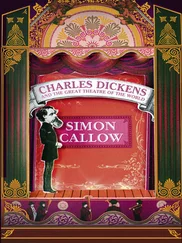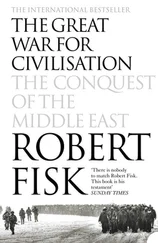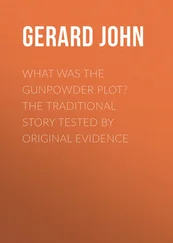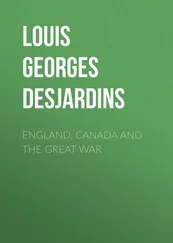It may be noted here that, although full and detailed surveys of the source material have been published for Smith’s and Gilson’s battalions (by Michael Stedman and Alfred Peacock, respectively), no similar synthesis has been attempted for Tolkien’s for more than fifty years; and none, I believe, that has made use of a similar range of eyewitness reports. This book therefore stands as a unique latter-day account of the experiences of the 11th Lancashire Fusiliers on the Somme. Since my narrative is not primarily concerned with matters of military record, however, I have been at pains not to overburden it with the names of trenches and other lost landmarks (which often have variants in French, official British, and colloquial British), map references, or the details of divisional and brigade dispositions.
If nothing else, the phenomenal worldwide interest in Tolkien is sufficient justification for such a study; but I hope it will prove useful to those who are interested in his depiction of mythological wars from old Beleriand to Rhûn and Harad; and to those who believe, as I do, that the Great War played an essential role in shaping Middle-earth.
In the course of my research, the emergence of this imagined version of our own ancient world from the midst of the First World War has come to seem far from strange, although no less unique for all that. To sum up, I believe that in creating his mythology, Tolkien salvaged from the wreck of history much that it is good still to have; but that he did more than merely preserve the traditions of Faërie: he transformed them and reinvigorated them for the modern age.
So much has the biographical aspect of this book grown, however, that it seemed best, in the end, to restrict my comments on the possible relationship between the life and the writings to a few observations, and to set out my overall case in a ‘Postscript’. Having read the story of Tolkien’s experiences during the Great War, those who also know The Hobbit and The Lord of the Rings , or The Silmarillion and its antecedents, will be able to draw their own more detailed conclusions, if they wish, about how these stories were shaped by the war.
Perhaps this is the way Tolkien would have wanted it, if indeed he had countenanced any biographical inquiry into his life and work. A few years after the publication of The Lord of the Rings , he wrote to an enquirer:
I object to the contemporary trend in criticism, with its excessive interest in the details of the lives of authors and artists. They only distract attention from an author’s works…and end, as one now often sees, in becoming the main interest. But only one’s Guardian Angel, or indeed God Himself, could unravel the real relationship between personal facts and an author’s works. Not the author himself (though he knows more than any investigator), and certainly not so-called ‘psychologists’ [ Letters , 288].
I do not claim any divine insight into Tolkien’s mind, and I do not pretend to put him on the psychiatrist’s couch. I have not gone hunting for shock and scandal, but have focused at all times on matters that seem to me to have played a part in the growth of his legendarium. I hope that this story of the passage of an imaginative genius through the world crisis of his times will cast a little light on the mysteries of its creation.
At all points, matters of opinion, interpretation, and exegesis are my own, and not those of the Tolkien family or the Tolkien Estate. I thank them, however, for permission to reproduce material from private papers and the published writings of J. R. R. Tolkien.
Many other large debts of gratitude have accrued during the writing of this book. First and foremost, I must thank Douglas A. Anderson, David Brawn, and Andrew Palmer for advice and assistance beyond the call of duty or friendship. Without their help, and that of Carl F. Hostetter and Charles Noad, this book would never have seen daylight. I would particularly like to express my gratitude to Christopher Tolkien, for his generosity in sharing with me not only his father’s personal papers but also a great deal of his own time; his perceptive comments have rescued me from many pitfalls and have helped to shape Tolkien and the Great War. For their great kindness in loaning me letters and photographs of R. Q. Gilson, I would like to thank Julia Margretts and Frances Harper. For hospitably fielding my questions about Christopher Wiseman, and for permission to quote from his letters, I thank his widow Patricia and her daughter, Susan Wood.
David Doughan, Verlyn Flieger, Wayne G. Hammond, John D. Rateliff, Christina Scull, and Tom Shippey have all given me their expertise and insight on multifarious aspects of Tolkien’s life and work; the latter’s critical study The Road to Middle-earth greatly enlarged my understanding of Tolkien’s work. But for the help of Christopher Gilson, Arden R. Smith, Bill Welden, and Patrick Wynne, my discussions of linguistic matters would have foundered. Phil Curme, Michael Stedman, Phil Russell, Terry Carter, Tom Morgan, Alfred Peacock, and Paul Reed have all helped me to overcome obstacles to my understanding of Kitchener’s army and the Battle of the Somme. Thanks must also go to all those others who have taken the time to answer my endless questions, including Robert Arnott, the Reverend Roger Bellamy, Matt Blessing, Anthony Burnett-Brown, Humphrey Carpenter, Peter Cook, Michael Drout, Cyril Dunn, Paul Hayter, Brian Sibley, Graham Tayar, Timothy Trought, and Catherine Walker.
Of course, none of the above are responsible for any errors of fact or interpretation that may remain.
For help with archival research, I would like to express my gratitude to Lorise Topliffe and Juliet Chadwick at Exeter College, Oxford; Christine Butler at Corpus Christi College, Oxford; Kerry York at King Edward’s School, Birmingham; Dr Peter Liddle at the Brotherton Library, the University of Leeds; Tony Sprason at the Lancashire Fusiliers Museum, Bury; as well as the staff of the Public Record Office, Kew, the Departments of Documents, Printed Books, and Photographs at the Imperial War Museum, Lambeth, the Modern Papers Reading Room at the Bodleian Library, Oxford, and Hull Central Library. Archive material and photographs have been reproduced with the permission of the governors of the Schools of King Edward IV and the Rector and Fellows of Exeter College, Oxford. I am grateful to Cynthia Swallow ( née Ferguson) for permission to make use of material from the papers of Lionel Ferguson; to Mrs T. H. A. Potts and the late Mr T. H. A Potts for permission to quote from the papers of G. A. Potts; and to Mrs S. David for permission to quote from the papers of C. H. David. Every effort has been made to contact the copyright holders for other papers from which I have quoted.
For his meticulous copy-editing, his patience with my stylistic foibles, and his extraordinary fortitude, I must thank Michael Cox. Thanks also go to Clay Harper, Chris Smith, Merryl Futerman, and Ian Pritchard for their help and advice during the course of publication; and to the Evening Standard, for allowing me time off to complete this book.
Throughout, my newspaper colleagues have helped me keep it all in perspective. Ruth Baillie, Iliriana Barileva, Gary Britton, Patrick Curry, Jamie Maclean, Ted Nasmith, Trevor Reynolds, Dee Rudebeck, Claire Struthers, Dan Timmons, Priscilla Tolkien, A. N. Wilson, Richard Younger, and especially Wendy Hill have all provided much-needed support and encouragement at crucial points. Finally, I would like to thank my family – my parents Jean and Roy Garth, my sisters Lisa and Suzanne, my nephews Simeon and Jackson, and my niece Georgia – and to apologize to them for disappearing behind a pile of papers for two years.
Читать дальше
